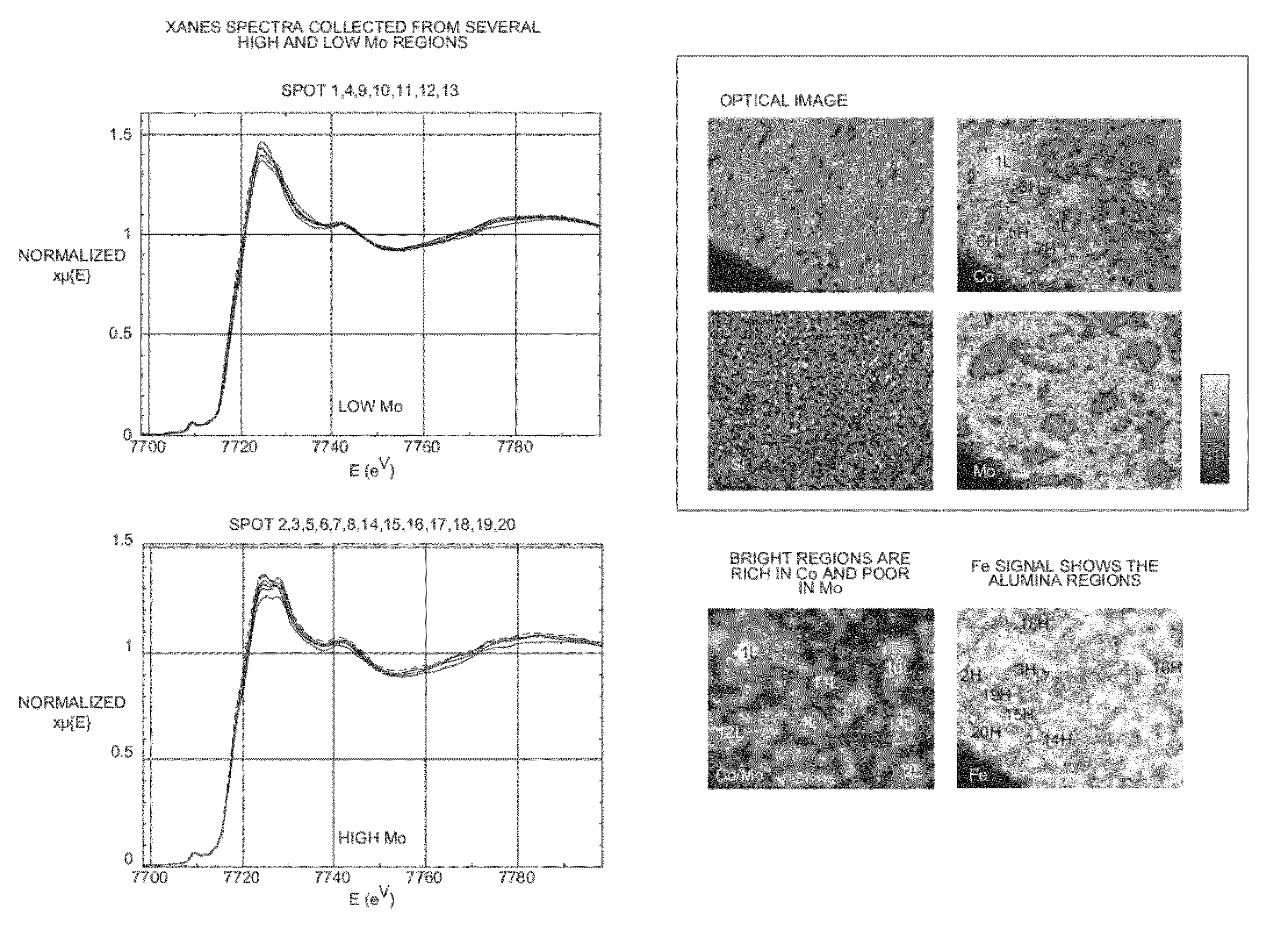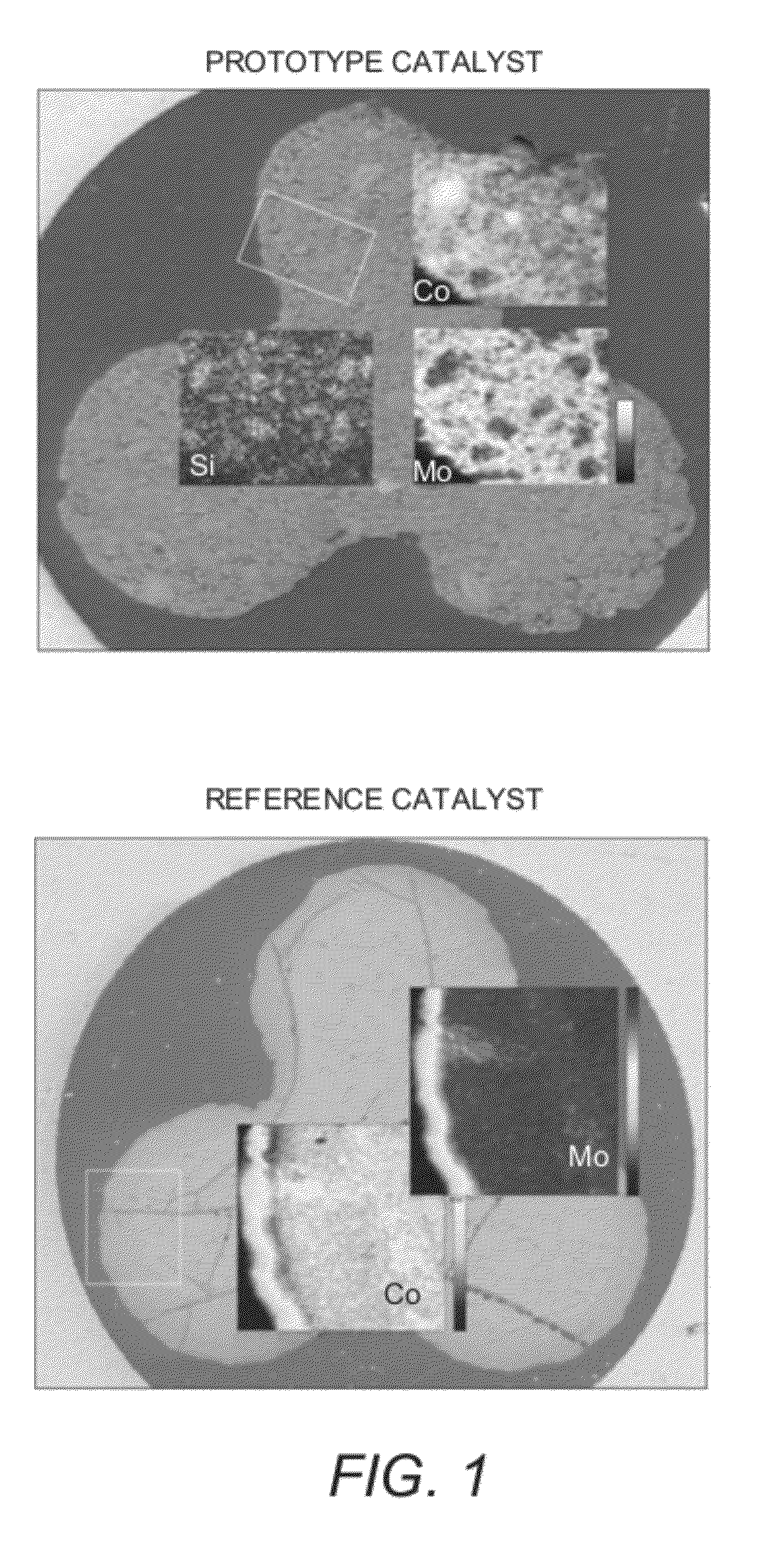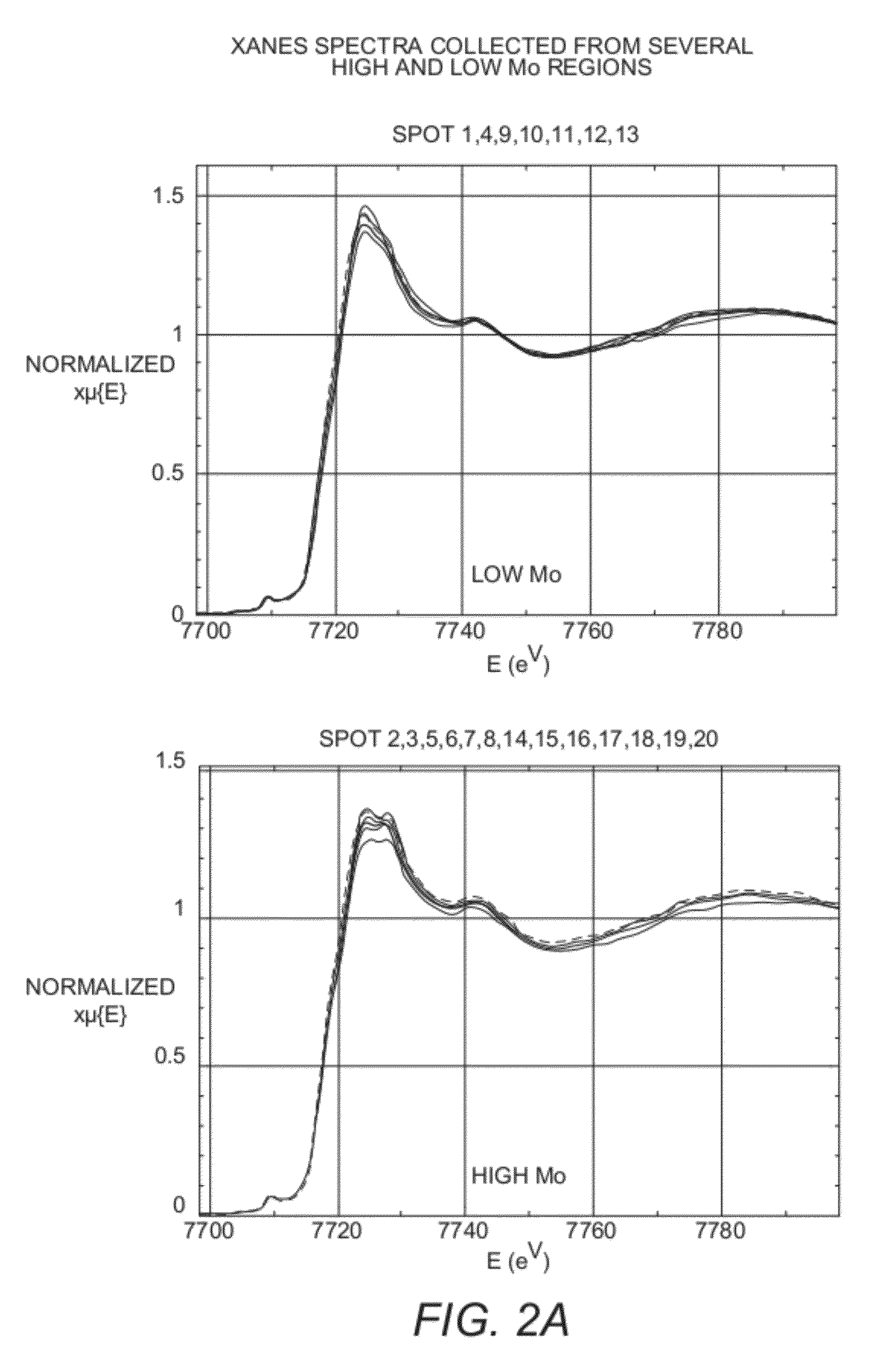Solid material characterization with x-ray spectra in both transmission and fluoresence modes
a solid material and fluorescence mode technology, applied in the field of solid material analysis by xrays, can solve the problem that the intensity of monochromatic radiation that can be obtained from conventional electron beams and x-ray tubes is too low for most xas measurements, and achieve the effect of effectively analysing samples and good mechanical integrity
- Summary
- Abstract
- Description
- Claims
- Application Information
AI Technical Summary
Benefits of technology
Problems solved by technology
Method used
Image
Examples
example 1
Macroscale-Representative Catalyst Sample Preparation and Analytical Equipment
[0036]Samples of cylindrical extruded particles (extrudates) of catalysts comprising cobalt and molybdenum (as catalytically active metals) dispersed on an alumina-containing substrate were prepared for analysis by x-ray fluorescence (XRF) and x-ray absorption spectroscopy (XAS). A “prototype” catalyst differed from a “reference” catalyst in that it contained amorphous silica alumina, available commercially from Catalysts & Chemicals Industries Co. Ltd. (CCIC) (Yokohama, Japan), in the catalyst substrate. In each case, the catalyst particles were combined with an EPON™ epoxy resin (Miller-Stephenson Chemical Company, Inc., Danbury, Conn., USA) as a reinforcing agent, by embedding the particles in the resin, which, with the exception of Cl, contained elements all of a lower atomic number relative to those of interest in the solid catalyst particle samples being analyzed. To force the epoxy resin into the ca...
example 2
Analysis of the Macroscale-Representative Catalyst Samples by XRF and XAS
[0039]The results of the XRF and XAS analyses for the prototype catalyst, having a substrate comprising both alumina and amorphous silica alumina, were compared to those of the reference catalyst, without the amorphous silica alumina. The relative distributions of Co, Mo, Si (of the CCIC particles) and Fe (of the alumina binder) were determined from XRF to produce 2-dimensional elemental specific maps, covering a sample area of 400×500 μm, for the prototype and reference catalysts, as shown in FIG. 1. A specific finding from this analysis of the macroscale-representative samples (which could not be determined from analysis of bulk powder samples) was the heterogeneity in both Mo and Co distribution that result from the introduction of amorphous silica alumina in the catalyst substrate. Also evident from the XRF results was a positive correlation between regions of low Mo concentration and regions of high amorph...
PUM
| Property | Measurement | Unit |
|---|---|---|
| thickness | aaaaa | aaaaa |
| particle size | aaaaa | aaaaa |
| particle size | aaaaa | aaaaa |
Abstract
Description
Claims
Application Information
 Login to View More
Login to View More - R&D
- Intellectual Property
- Life Sciences
- Materials
- Tech Scout
- Unparalleled Data Quality
- Higher Quality Content
- 60% Fewer Hallucinations
Browse by: Latest US Patents, China's latest patents, Technical Efficacy Thesaurus, Application Domain, Technology Topic, Popular Technical Reports.
© 2025 PatSnap. All rights reserved.Legal|Privacy policy|Modern Slavery Act Transparency Statement|Sitemap|About US| Contact US: help@patsnap.com



